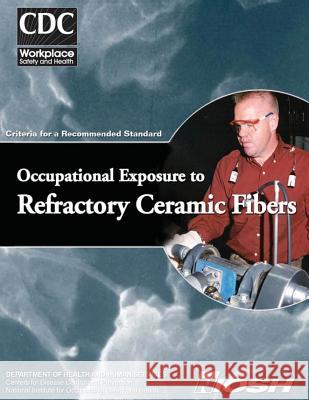Occupational Exposure to Refractory Ceramic Fibers: Criteria for a Recommended Standard » książka
Occupational Exposure to Refractory Ceramic Fibers: Criteria for a Recommended Standard
ISBN-13: 9781499234701 / Angielski / Miękka / 2014 / 224 str.
Occupational Exposure to Refractory Ceramic Fibers: Criteria for a Recommended Standard
ISBN-13: 9781499234701 / Angielski / Miękka / 2014 / 224 str.
(netto: 72,18 VAT: 5%)
Najniższa cena z 30 dni: 75,58
ok. 16-18 dni roboczych
Dostawa w 2026 r.
Darmowa dostawa!
The National Institute for Occupational Safety and Health (NIOSH) has reviewed data characterizing occupational exposure to airborne refractory ceramic fibers (RCFs) and information about potential health effects obtained from experimental and epidemiologic studies. From this review, NIOSH determined that occupational exposure to RCFs is associated with adverse respiratory effects as well as skin and eye irritation and may pose a carcinogenic risk based on the results of chronic animal inhalation studies. When the U.S. Congress passed the Occupational Safety and Health Act of 1970 (Public Law 91-596), it established the National Institute for Occupational Safety and Health (NIOSH). Through the Act, Congress charged NIOSH with recommending occupational safety and health standards and describing exposure limits that are safe for various periods of employment. These limits include but are not limited to the exposures at which no worker will suffer diminished health, functional capacity, or life expectancy as a result of his or her work experience. By means of criteria documents, NIOSH communicates these recommended standards to regulatory agencies (including the Occupational Safety and Health Administration OSHA]), health professionals in academic institutions, industry, organized labor, public interest groups, and others in the occupational safety and health community. Criteria documents contain a critical review of the scientific and technical information about the prevalence of hazards, the existence of safety and health risks, and the adequacy of control methods. This criteria document is derived from reviews of information from human and animal studies of the toxicity of refractory ceramic fibers (RCFs) and is intended to describe the potential health effects of occupational exposure to airborne fibers of this material. RCFs are amorphous synthetic fibers produced by the melting and blowing or spinning of calcined kaolin clay or a combination of alumina, silica, and other oxides. RCFs belong to the class of synthetic vitreous fibers (SVFs)-materials that also include fibers of glass wool, rock wool, slag wool, and specialty glass. RCFs are used in commercial applications requiring lightweight, high-heat insulation (e.g., furnace and kiln insulation). Commercial production of RCFs began in the 1950s in the United States, and production increased dramatically in the 1970s. Domestic production of RCFs in 1997 totaled approximately 107.7 million lbs. Currently, total U.S. production has been estimated at 80 million lbs. per year, which constitutes 1% to 2% of SVFs produced worldwide. In the United States, approximately 31,500 workers have the potential for occupational exposure to RCFs during distribution, handling, installation, and removal. More than 800 of these workers are employed directly in the manufacturing of RCFs and RCF products. With increasing production of RCFs, concerns about exposures to airborne fibers prompted animal inhalation studies that have indicated an increased incidence of mesotheliomas in hamsters and lung cancer in rats following exposure to RCFs. Studies of workers who manufacture RCFs have shown a positive association between increased exposure to RCFs and the development of pleural plaques, skin and eye irritation, and respiratory symptoms and conditions (including dyspnea, wheezing, and chronic cough). In addition, current and former RCF production workers have shown decrements in pulmonary function.
Zawartość książki może nie spełniać oczekiwań – reklamacje nie obejmują treści, która mogła nie być redakcyjnie ani merytorycznie opracowana.











